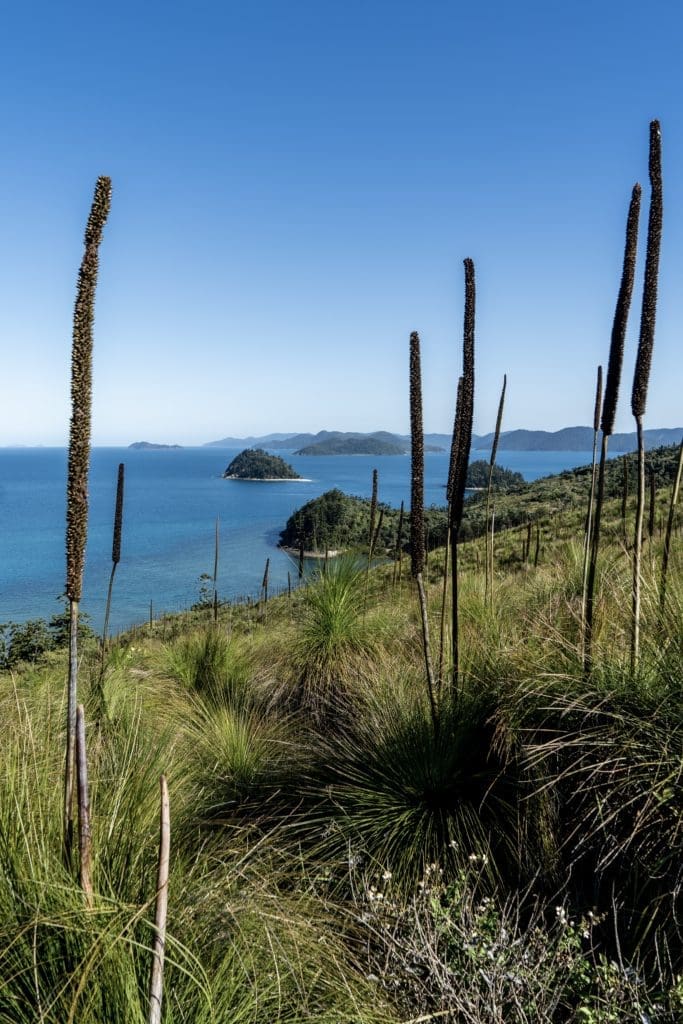
Did you know, the Great Barrier Reef Marine Park is not just coral reefs? In fact, only 7% of the park is made up of the reefs that make this area so famous!
So what else fills the park?
Another key habitat is the 600 islands spreading across our 230,000km² playground, here in the Whitsundays we’re lucky enough to have 74 of them! Grass trees are one of the key plants associated with the iconic look of our island paradise.
Grasstrees are iconic plants, recognisable even to budding botanists. All 66 species are endemic to (only found in) Australia.
Most species are extremely slow growing. Studies of some of the taller species found that trunk height increases at about 0.8cm to 6cm per year, but this varies with local environmental conditions. In any event, grass trees are often very long-lived; some are estimated to be 350 to 450 years old!
Grass trees may take several years to flower. Flowers form on a spear-like spike, which can be up to 4m long! Flowers are arranged in a spiral up the spike, and produce a great amount of nectar, attracting a wide variety of insects and birds meaning they contribute to the biodiversity of the Great Barrier Reef. Once pollinated, the flowers form a tough, pointed fruit capsule that’s typically matt-black.
Grass trees were also invaluable to the Aborigine people. It was a source of food, drink and building material in many parts of Australia. For the Ngaro, the traditional custodians of the Whitsunday Islands, this would have been no exception.
Food – Fleshy white parts of leaves and the succulent roots of the plants were frequently eaten. The seeds were collected, ground into a powder and used to make damper. They also collected grubs from the base of the plant.
Drink – The flower of the Grass Tree was soaked in a trough of water-extracting a thick sweet nectar which could be enjoyed as is or fermented for 3-5 days in order to produce an alcoholic brew.
Material – The leaves of the Xanthorrhoea produce a hard waterproof resin, which becomes a liquid when warmed, but sets hard when cooled. The Aboriginals used the resin as a super glue type of material to attach blades to spears and as a waterproofing material for canoes.
When visiting the Whitsundays with Ocean Rafting we show you all the wonders of the Great Barrier Reef, from the iconic Reef itself to the Geological and Cultural History of the Whitsunday Islands, everything has a story to tell and our talented crew are eager to pass on this information to you on your Ocean Rafting experience!

